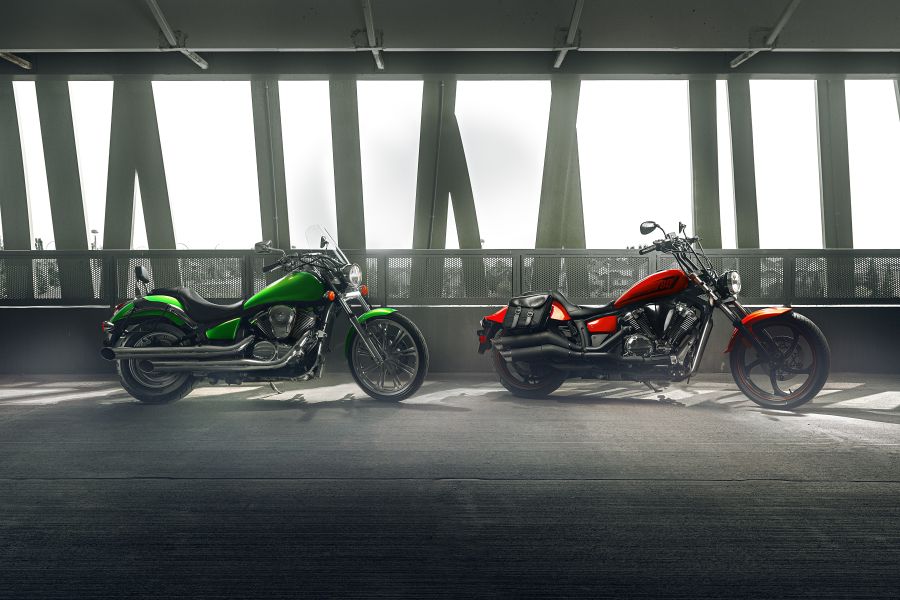
Being short-handed doesn’t have to limit you to riding a short bike.
Aside from not being able to reach the ground while sitting on the Yamaha R 1 of your dream, you are just 5 foot 6 inches tall. Should you sacrifice your dreams and ambitions in favor of a Kawasaki Vulcan s? No way. The Vulcan s is a good bike, but you don’t have to ride a beginning bike for the rest of your life just because you are vertically challenged. Even if you are not very tall, there are ways to use a high motorcycle to your advantage.
Table of Contents
How to Adjust a Motorcycle for Shorter Riders?
It’s important to note that although women outnumber men in one aspect of motorcycle riding—being short in stature—this advice applies to all sexes, regardless of gender identity. Your height, weight, and how you set up the bike so that it works best for you are the only factors that matter.
You can still ride a tall bike without any modifications. Jocelin Snow has a height of 5 feet and 1.5 inches. Even though she has a full six inches between her feet and the ground when seated regularly, she rides even the largest BMW adventure bikes.
I can’t flat-foot my Kawasaki Z 750 even at six feet tall. On my toes, I can hold it up at a stop, but that’s not ideal. Leaning slightly to the left and letting my left foot fall flat is a superior approach. Despite using both feet, this is really far more stable than tip-toeing. Additionally, it enables you to keep your right foot on the rear brake, which is helpful for maintaining your balance when stopped on a slope. I’ve been becoming better at this approach as my right foot heals, since I’d rather trust my left foot, which is still intact, to support the weight at this stage.
Today’s motorcycles typically have adjustable suspension. If yours doesn’t, a third-party option most likely does. Some individuals never change the default suspension settings, which eliminates a crucial tool for adjusting ride height and performance.
Most suspensions are pre-configured to support a rider weighing 180 pounds out of the box. Since smaller people typically weigh less, you should soften your suspension to correspond with your weight. When you’re sitting on the motorcycle, the suspension is intended to function at its finest. As parked, it is lofty; yet, when you get in, it crouches down to the proper height and shape. If it’s designed for a 180-pound rider and you weigh 120 pounds instead, it won’t compress properly and will ride taller than it should. Because it will now function as the factory intended, properly setting it up will also increase the motorcycle’s overall effectiveness.
Lower the Motorcycle Seat
Several bikes, such as the Honda Africa Twin, have adjustable seat heights. But everyone has the choice to purchase an aftermarket seat that allows you to sit lower when riding. If you’re little and light, you might lose some padding, but you won’t require as much support as a bigger, heavier rider.
The seat width should also be taken into account. When it comes to putting your feet on the ground, a little narrower seat can be a huge help. Because you won’t need to spread your legs as far to wrap them around the seat, you’ll be able to reach the ground farther.
You can alter your current seat yourself if you’re feeling very daring. Stretch and reattach the outer cover after removing it, carving away at the foam. For this task, I discovered that an electric cutting knife worked quite well. Just don’t intend to use it for the Thanksgiving meal that follows.
Lower the Motorcycle’s Height
The last solution on this list—lowering the bike itself—should be noted. Before lowering the motorcycle, see if you can make it work for you by combining any of the aforementioned techniques. Dropping the bike will change the geometry of the suspension, which will change the lean angle and suspension travel as well as how the bike handles.
The simplest way to lower your ride height on a modern motorbike with a single rear shock suspension is to replace the linkage that connects your shock absorber’s bottom to the motorcycle. This is referred to as the “dog bone” because of its form. The ride height and spring rate will both be greatly affected by a modest modification in the dog bone’s length. The suspension may get stiffer if you drop the motorcycle. Based on the motorcycle, you might be able to adjust this stiffness or you might not.
The rear shock absorber can also be shortened. This included locating an aftermarket one that was shorter than stock or having your current one changed. Both options are significantly more costly than buying a new dog bone. You can retain your original spring or at least a respectable spring rate, which is a benefit.
In any event, it’s wise to investigate reducing alternatives for your specific type to find out what tried-and-true choices are available as well as potential dangers to avoid.
